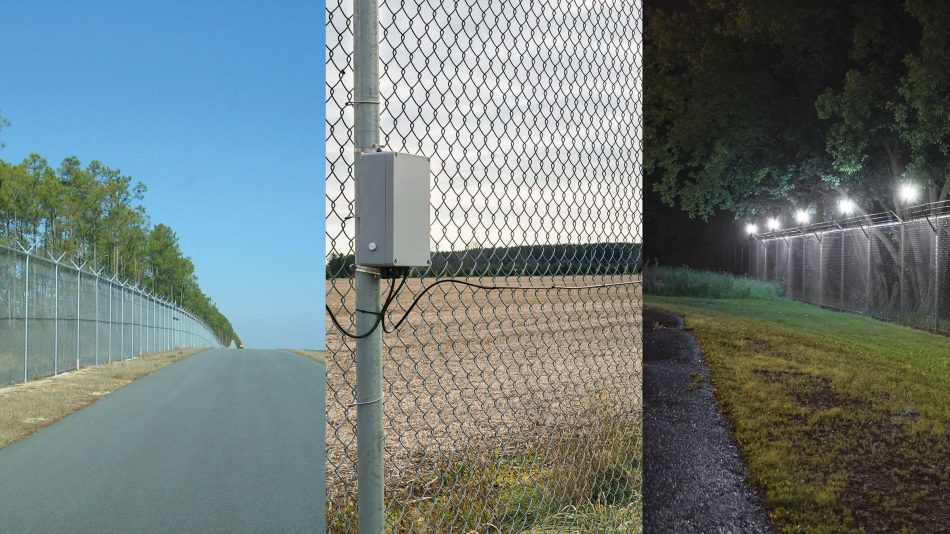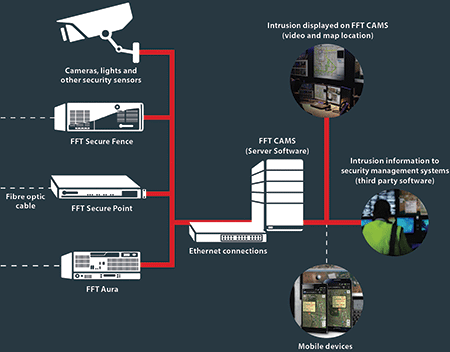Why Fiber Optic Security Systems Are the Future of Protection
The shift to fiber optic safety systems notes a considerable advancement in the world of defense, driven by their remarkable information transmission capabilities and strength to outside interferences. These systems not only promote faster and extra dependable communication yet likewise provide a cost-effective service with reduced upkeep requirements. As the landscape of safety and security develops together with emerging modern technologies such as AI and IoT, the possibility for optical fiber to improve and redefine safety and security frameworks comes to be increasingly noticeable. The ramifications of these innovations increase crucial concerns regarding the future of protection steps and their efficiency in an ever-changing environment.
Advantages of Fiber Optic Solutions
One of the main benefits of fiber optic systems is their exceptional data transfer capacity, which promotes the transmission of large quantities of data over cross countries without considerable loss. This particular is particularly advantageous for security applications that require the constant surveillance and transfer of high-def video feeds, sensor data, and various other critical information. Optical fiber can fit the growing demands of modern security systems, making certain that information continues to be intact and reputable.
Furthermore, fiber optic cords are less vulnerable to electro-magnetic interference, which can be a significant issue in environments with different electronic devices. This resistance improves the stability of the data being transferred, therefore reducing the danger of data violations or system failures. Moreover, fiber optic systems are inherently a lot more secure than conventional copper cords, as taking advantage of a fiber optic line without detection is exceptionally difficult.
The resilience of fiber optic wires likewise adds to their charm. They are resistant to environmental elements such as moisture and temperature level variations, minimizing maintenance expenses and increasing system long life. Generally, these benefits position fiber optic systems as a robust and reliable selection for modern-day safety and security infrastructures, making certain reliable and protected information transmission.
Boosted Information Transmission Speed

The ability to transmit large quantities of information rapidly promotes the seamless assimilation of high-def video clip feeds and advanced analytics. Safety and security systems can currently refine and assess details in real-time, boosting action times and situational understanding. Additionally, fiber optic links sustain longer transmission ranges without deterioration of signal quality, making them ideal for large protection networks.
The enhanced speed of fiber optic systems not just enhances the efficiency of safety operations however also lowers latency. This is especially vital in important circumstances where timely decision-making can prevent safety violations or mitigate possible risks. As organizations remain to focus on safety and performance, the need for quick and reliable information transmission will undoubtedly strengthen fiber optic systems as a cornerstone of contemporary safety infrastructure.
Resistance to Interference
Fiber optic safety and security systems constantly show phenomenal resistance to electro-magnetic interference, a critical advantage in atmospheres prone to electronic noise. Unlike conventional copper cables, which can be adversely influenced by magnetic fields, superhigh frequency disturbance, and other forms of electric disruption, fiber optic cable televisions make use of light to transmit information. This integral residential property ensures that the signals continue to be clear and unchanged, despite bordering electronic task.
Using glass or plastic fibers in fiber optic technology creates an obstacle against interference, enabling for reliable data transmission also in tough circumstances such as commercial facilities, urban areas with high electronic website traffic, or areas near radio towers. This characteristic considerably reduces the likelihood of signal destruction or loss, making fiber optic systems specifically suitable for safety and security applications where honesty and precision of data are extremely important.
Additionally, this resistance to interference boosts the total performance and integrity of safety and security systems, ensuring that monitoring and alert systems operate flawlessly. In a world where protection is increasingly threatened by innovative technologies, the resilience of fiber optic systems stands apart as an essential feature, enhancing their status as an important part of modern-day security facilities.
Cost-Effectiveness Over Time
Considerable expense savings can be achieved in time with the application of fiber optic protection systems. While the preliminary investment may seem greater compared to standard copper-based see this site systems, the long-term monetary benefits official website come to be apparent with minimized functional and upkeep costs (fiber security). Fiber optic cable televisions are naturally a lot more long lasting and less vulnerable to ecological variables, which translates to reduce substitute and repair work costs over their lifespan
In addition, fiber optic systems need less power to run, which even more reduces energy prices. Boosted data transmission capacities permit less repeaters and amplifiers, reducing tools financial investment and improving installation processes. The scalability of these systems additionally adds to cost-effectiveness, as companies can expand their safety and security framework without sustaining significant added costs.
One more factor to consider is the boosted performance in surveillance and action capabilities that optical fiber offer. Improved real-time data transmission can cause quicker event response times, possibly mitigating losses and obligations linked with safety violations. In sum, the long-lasting benefits of fiber optic protection systems not only validate the preliminary expenditure but likewise position them as a monetarily sensible choice for organizations seeking durable defense solutions.

Future Technologies in Safety
Advancing innovations are readied to change security systems, incorporating fabricated intelligence (AI) and maker knowing to enhance threat detection and reaction capacities. These innovations will allow protection systems to examine large amounts of data in real-time, recognizing patterns and abnormalities that indicate potential risks. This aggressive strategy will allow faster decision-making and a lot more effective occurrence feedbacks.
In addition, the unification of the Internet of Things (IoT) is leading the way for interconnected security gadgets, supplying detailed surveillance and monitoring. Smart sensors can pass on info about ecological modifications, while automated informs can notify safety workers promptly of questionable activities.
Furthermore, the evolution of biometric visit their website innovations will certainly better bolster protection systems. Face acknowledgment, finger print scanning, and retina recognition are coming to be a lot more innovative, giving layers of verification that are challenging to bypass.
Verdict
Finally, fiber optic protection systems represent a considerable improvement in defense modern technology, supplying unparalleled information transmission rate, resistance to electro-magnetic disturbance, and long-lasting cost-effectiveness. As the need for innovative safety and security remedies proceeds to expand, the assimilation of fiber optics with emerging technologies such as AI, IoT, and biometrics will even more boost protection facilities (fiber security). The combination of these developments will guarantee a much more safe and receptive environment, strengthening optical fiber as a keystone of future protection systems